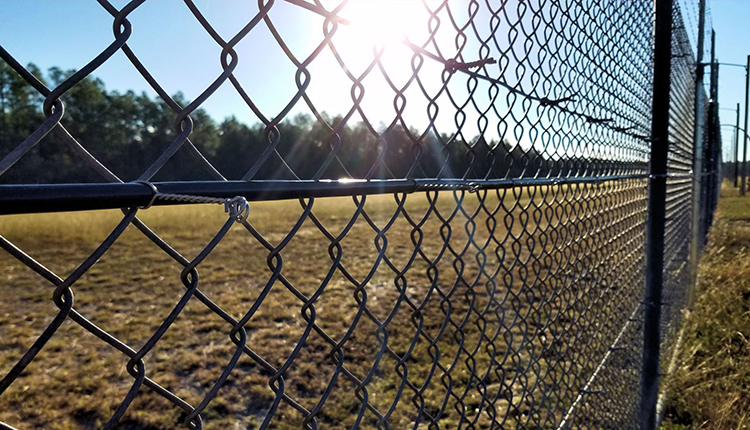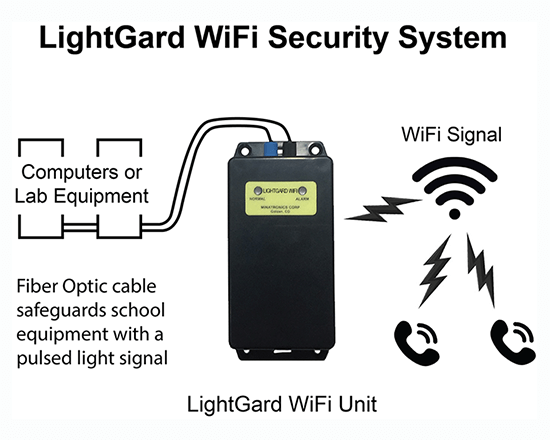Why Fiber Optic Safety And Security Solutions Are the Future of Defense
The change to fiber optic security systems notes a considerable advancement in the realm of defense, driven by their outstanding information transmission abilities and resilience to external interferences. These systems not only help with faster and a lot more reputable interaction but additionally present an affordable solution with minimized upkeep demands. As the landscape of protection progresses together with emerging innovations such as AI and IoT, the possibility for optical fiber to enhance and redefine security facilities ends up being progressively obvious. The ramifications of these innovations elevate crucial questions regarding the future of security procedures and their efficiency in an ever-changing setting.
Benefits of Fiber Optic Systems
One of the primary advantages of fiber optic systems is their remarkable data transfer ability, which promotes the transmission of large quantities of information over long distances without significant loss. This characteristic is especially helpful for protection applications that need the continuous tracking and transfer of high-definition video clip feeds, sensing unit information, and various other vital details. Optical fiber can fit the growing demands of contemporary security systems, making certain that information continues to be intact and trustworthy.
Furthermore, fiber optic cords are less at risk to electro-magnetic interference, which can be a significant concern in environments with various digital gadgets. This resistance enhances the honesty of the data being transferred, consequently decreasing the danger of information violations or system failures. Fiber optic systems are inherently more safe than traditional copper cable televisions, as tapping right into a fiber optic line without discovery is extremely tough.
The sturdiness of fiber optic cables also adds to their charm. They are resistant to environmental variables such as moisture and temperature fluctuations, minimizing maintenance costs and increasing system durability. Overall, these advantages position fiber optic systems as a durable and reliable option for modern safety and security facilities, guaranteeing trusted and secure data transmission.
Improved Data Transmission Speed

The capability to transmit huge quantities of information promptly helps with the smooth assimilation of high-def video clip feeds and progressed analytics. Security systems can currently process and assess details in real-time, enhancing feedback times and situational awareness. In addition, fiber optic connections support longer transmission ranges without deterioration of signal high quality, making them ideal for large protection networks.
The increased rate of fiber optic systems not just enhances the effectiveness of safety operations but likewise lowers latency. This is especially important in vital scenarios where timely decision-making can protect against safety breaches or mitigate potential threats. As companies proceed to prioritize security and efficiency, the need for quick and trusted data transmission will certainly solidify fiber optic systems as a foundation of contemporary protection framework.
Resistance to Disturbance
Fiber optic protection systems constantly show extraordinary resistance to electro-magnetic interference, an important advantage in atmospheres susceptible to electronic noise. Unlike standard copper cable televisions, which can be negatively influenced by electromagnetic fields, radio regularity disturbance, and various other types of electric disruption, fiber optic wires utilize light to transmit information. This intrinsic building guarantees that the signals remain clear and unchanged, regardless of surrounding digital task.
The usage of visit this page glass or plastic fibers in fiber optic innovation develops an obstacle versus interference, permitting dependable information transmission even in challenging scenarios such as industrial centers, urban check my site locations with high electronic web traffic, or locations near radio towers. This particular significantly minimizes the possibility of signal destruction or loss, making fiber optic systems especially suitable for safety and security applications where stability and precision of data are extremely important.
Furthermore, this resistance to interference improves the total performance and reliability of security systems, making sure that tracking and sharp systems work seamlessly. In a world where safety and security is significantly intimidated by advanced innovations, the resilience of fiber optic systems stands apart as a critical attribute, reinforcing their status as an essential element of modern-day protection framework.
Cost-Effectiveness In Time
Significant price savings can be achieved gradually with the application of fiber optic protection systems. While the initial financial investment may seem greater compared to conventional copper-based systems, the long-lasting monetary benefits end up being evident with decreased operational and maintenance costs (fiber security). Fiber optic cords are naturally a lot more durable and less vulnerable to ecological aspects, which translates to lower replacement and fixing expenditures over their life-span
Additionally, fiber optic systems need less power to operate, which even more lowers energy expenses. Improved data transmission capacities allow for less repeaters and amplifiers, reducing devices investment and improving installment procedures. The scalability of these systems also adds to cost-effectiveness, as organizations can broaden their protection facilities without incurring significant added expenses.
An additional factor to consider is the raised efficiency in monitoring and reaction abilities that optical fiber supply. Enhanced real-time data transmission can lead to quicker occurrence response times, potentially mitigating losses and liabilities connected with protection breaches. In sum, the long-lasting benefits of fiber optic safety systems not only validate the first expenditure yet also position them as a financially sensible selection for organizations looking for durable security solutions.

Future Innovations in Safety And Security
Progressing technologies are set to transform safety systems, integrating expert system (AI) and artificial intelligence to improve risk discovery and response capabilities. These developments will certainly allow security systems to assess huge quantities of information in real-time, identifying patterns and anomalies that indicate possible threats. This proactive approach will certainly enable faster decision-making and more efficient event hop over to here responses.
Furthermore, the unification of the Net of Points (IoT) is leading the means for interconnected safety and security gadgets, supplying thorough security and surveillance. Smart sensing units can pass on information regarding ecological modifications, while automated alerts can notify security personnel instantly of suspicious tasks.
Moreover, the evolution of biometric modern technologies will even more reinforce safety mechanisms. Facial acknowledgment, finger print scanning, and retina identification are becoming extra advanced, giving layers of verification that are difficult to bypass.
Verdict
Finally, fiber optic protection systems stand for a considerable improvement in defense technology, offering unequaled information transmission rate, resistance to electromagnetic interference, and long-lasting cost-effectiveness. As the demand for sophisticated security services continues to expand, the integration of fiber optics with emerging technologies such as AI, IoT, and biometrics will certainly better enhance protection facilities (fiber security). The mix of these technologies will certainly guarantee a more protected and responsive atmosphere, solidifying fiber optics as a foundation of future safety and security systems